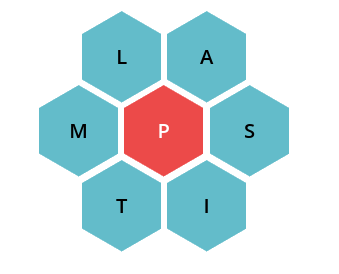
Understanding Syna: A Deep Dive into a Lesser-Known Condition
In the realm of medical science, certain conditions, though not commonly discussed, hold a unique place due to their complex and often mysterious nature. One such condition is Syna, a term that might not be as widely recognized as other medical diagnoses but has significant implications for those affected by it. Unlike mainstream illnesses, Syna resides on the fringes of medical literature, posing intriguing questions for both researchers and patients alike. This article delves deep into the concept of Syna, unraveling its characteristics, possible causes, symptoms, and the current state of treatment and research surrounding it.
What is Syna?
Syna, often referred to by its scientific designation as Synaesthesia, is a rare and intriguing neurological condition in which the stimulation of one sensory or cognitive pathway leads to involuntary experiences in another. In simpler terms, people with Syna perceive the world in a way that is fundamentally different from the norm. For example, they might “see” sounds, “hear” colors, or associate specific numbers with particular textures. While this may sound extraordinary, it is a reality for those who live with this condition.
Syna is not a disease in the traditional sense. It does not harm the body or brain in ways that require immediate medical intervention. Instead, it is often considered a neurological phenomenon that affects sensory perception and cognitive processes. Though benign in nature, Syna can have profound impacts on a person’s experience of the world, sometimes making everyday tasks more challenging or altering how they engage with their surroundings. The rarity of Syna, coupled with its varied manifestations, has made it a subject of fascination for neuroscientists, psychologists, and even artists, as it blurs the boundaries between the sensory and cognitive domains.
Historical Context: The Discovery and Recognition of Syna
The recognition of Syna as a distinct neurological phenomenon dates back several centuries, although early accounts were often met with skepticism. It wasn’t until the late 19th century that more formal documentation of the condition began to appear in medical literature. The term “synaesthesia” itself derives from the Greek words “syn,” meaning together, and “aesthesis,” meaning sensation. This nomenclature captures the core essence of the condition: the joining together of different sensory experiences.
One of the earliest detailed accounts of Syna comes from British scientist Francis Galton in the 1880s, who noted the peculiar experience of individuals associating specific colors with particular sounds or numbers. Galton’s work laid the foundation for future explorations into the phenomenon, but it wasn’t until advances in neuroscience and psychology in the late 20th century that researchers began to gain a clearer understanding of the brain mechanisms underlying Syna.
The Neuroscience of Syna: What Happens in the Brain?
At its core, Syna World is believed to be a result of cross-wiring in the brain, where there is increased connectivity between sensory regions that are typically distinct. The exact neural mechanisms behind Syna are still being researched, but one popular hypothesis is that “hyperconnectivity” occurs in the brain’s sensory regions, leading to overlapping sensory experiences. For instance, in an individual with sound-color synaesthesia, a particular sound might activate not only the auditory cortex but also the visual cortex, causing the person to experience sound as a color.
Neuroimaging studies, particularly functional MRI scans, have shown that individuals with Syna often display unusual patterns of brain activity compared to those without the condition. Specifically, these studies indicate that areas of the brain responsible for processing different senses are activated simultaneously in people with Syna, even when only one sense is being directly stimulated. This cross-activation might be due to excessive neural connections that remain intact after early brain development, a theory that aligns with the observation that many people with Syna report having these experiences from a very young age.
Types of Syna: A Spectrum of Sensory Crossings
While the most commonly discussed form of Syna is grapheme-color synaesthesia—where individuals associate numbers or letters with specific colors—the condition manifests in a variety of ways. Some of the most studied types of Syna include:
- Sound-to-Color Synaesthesia: People with this form see specific colors in response to certain sounds, such as music or speech. A musical note might appear as a swirl of red, or a particular voice might evoke shades of blue.
- Lexical-Gustatory Synaesthesia: In this rare form, certain words or sounds trigger specific tastes in the mouth. For instance, hearing the word “clock” might cause the individual to taste chocolate.
- Number-Form Synaesthesia: Individuals with this type often see numbers arranged in specific spatial patterns, almost as if they are superimposed in the air or within their mental imagery.
- Mirror-Touch Synaesthesia: This form involves physically feeling sensations when observing another person being touched. For example, seeing someone tap their arm might cause the individual with this type of Syna to feel the sensation of tapping on their own arm.
- Personification Synaesthesia: This type involves attributing personality traits or emotions to everyday objects, letters, or numbers. For instance, the number 5 might be seen as mischievous, while the letter “A” is perceived as kind or nurturing.
Each type of Syna offers a glimpse into the fascinating complexity of human perception and raises questions about how our brains organize sensory information. The experience of Syna is often highly personal, with no two people experiencing it in exactly the same way. Despite these differences, those who live with the condition often report their synesthetic experiences as consistent and stable over time.
Causes of Syna: Genetics, Environment, or Both?
The exact causes of Syna are still a topic of active research, but there is evidence to suggest that genetics play a significant role in its development. Studies have shown that Syna often runs in families, leading scientists to speculate that there may be a genetic predisposition to the condition. Several genes are likely involved, though no single gene has been definitively identified as the cause.
In addition to genetics, environmental factors may also play a role in the development of Syna. Some researchers suggest that early childhood experiences, particularly those involving multisensory learning, could influence the likelihood of developing synaesthetic connections. For example, exposure to musical training at a young age might increase the chances of developing sound-to-color synaesthesia.
Another intriguing aspect of Syna is its frequent association with individuals who are highly creative or artistic. Many well-known artists, musicians, and writers are thought to have had synesthetic experiences, including Wassily Kandinsky, Vladimir Nabokov, and Pharrell Williams. This has led some researchers to speculate that Syna may be linked to certain patterns of brain development that enhance creativity, though this remains an area of ongoing investigation.
Living with Syna: The Everyday Experience
For individuals with Syna World Tracksuit, daily life can be a rich tapestry of sensory experiences that others might find difficult to comprehend. While some synesthetic experiences are described as pleasant or even enjoyable, others can be overwhelming. The constant flood of sensory associations can make certain situations—such as being in a noisy environment or processing complex information—more challenging.
Despite these potential difficulties, many individuals with Syna embrace their unique way of perceiving the world. Some describe it as a form of heightened awareness, a way of experiencing life in a more vibrant and interconnected way. Others might utilize their synesthetic abilities in creative fields, such as music or visual art, where they can translate their sensory experiences into expressive forms.
That said, there are cases where Syna can have negative impacts on daily functioning. In particular, mirror-touch synaesthesia can cause discomfort, as individuals may involuntarily feel pain or sensations they observe in others. Similarly, some forms of lexical-gustatory synaesthesia can interfere with speech comprehension, as the constant influx of taste sensations makes it harder to focus on conversation.
Diagnosis and Treatment: Is There a Cure for Syna?
Diagnosing Syna can be challenging, particularly because it is often self-reported and difficult to objectively measure. There are, however, standardized tests and questionnaires designed to identify synesthetic experiences. For example, the Synesthesia Battery is a widely used tool that helps quantify and assess the consistency of synesthetic associations over time. MRI scans and other neuroimaging techniques can also be employed to study brain activity in individuals suspected of having Syna.
Currently, there is no “cure” for Syna, nor is one necessarily sought by those who experience it. Since Syna is not typically classified as a disorder requiring treatment, there is little emphasis on finding ways to “correct” it. However, for individuals who find their synesthetic experiences distressing or disruptive, cognitive-behavioral therapies might help them better manage the condition.
Syna in Popular Culture and Art
Syna has captured the imagination of many, not just in scientific circles but also in the world of art, music, and literature. Wassily Kandinsky, a pioneer of abstract art, famously used his synesthetic experiences as inspiration for his paintings, often associating specific colors with musical notes. Similarly, Vladimir Nabokov, author of Lolita, frequently discussed his grapheme-color synaesthesia in his works, offering readers a glimpse into his unique way of perceiving the world.
In more recent years, musicians like Pharrell Williams have spoken openly about their synaesthetic experiences, with Williams describing how certain music evokes specific colors for him. These creative individuals demonstrate how Syna can be a source of inspiration, offering new ways of experiencing and interpreting the world.















